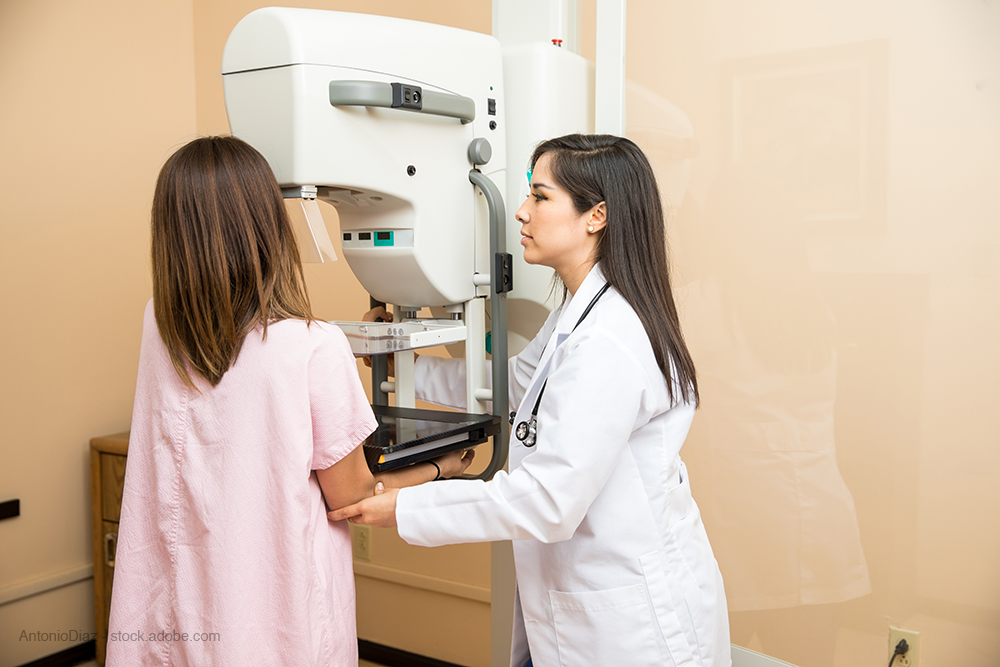Stay Up to Date on Dense Breast Information
With new laws on the horizon, why it’s vital for radiologists to stay on top of the latest dense breast reporting information.

Understanding the role dense breast tissue plays in a woman’s risk for developing breast cancer is critically important both for the patient and for her provider. While the knowledge base around this risk factor is growing, there’s still much education to be done.
Currently 38 states and Washington, D.C., have laws mandating women receive some level of information about dense breast tissue. The laws vary-some states include information about how dense tissue increases a woman’s breast cancer risk, as well as details about supplemental imaging. Others don’t. Although national language for discussing dense breast tissue is under construction at the FDA, not all states currently provide the same data. For instance, some state laws don’t provide women with information about whether they, specifically, have dense breasts.
To not only augment the dissemination of this information, but to also ensure data provided is medically accurate and standardized, JoAnn Pushkin, co-founder and executive director the website DenseBreast-info.org, discussed the educational tools and resources available to patients, referring providers, and radiologists during the AHRA: The Association of Medical Imaging Management annual meeting.
“It’s important for clinicians to understand what their state laws do and don’t require women be told about breast density overall or their own breast density,” Pushkin says. “Everyone needs to know what breast density is, why it matters, what supplemental screening considerations there are, as well as what their state law requires and what supplemental screening should be considered.
Related article: Dense Breast Reporting Regulations Increasing
Through resources vetted and approved by the organization’s Medical Advisory Board, the website offers tools that patients can use to broach the dense breast conversation with their medical providers. For example, the site provides a list of more than 40 frequently asked questions, including why breast density matters and whether a mammogram is effective enough in scanning dense breasts. Patients can also access videos that help explain the topic, as well as screening and the risk implications of dense tissue.
In addition to details about each state’s specific requirements for informing patients about their dense breast tissue status, the website also provides guidance for health providers on which patients may benefit from supplemental screening and also features a screening guidance flowchart. Health providers can also access a continuing medical education opportunity which qualifies for two AMA or ASRT credits or they can find links to additional resources that educate on breast density and its implications. Providers can also pursue a comprehensive list of frequently-asked questions developed for clinicians so they can better prepare themselves for patient conversations, Pushkin says.
Alongside clinical information, DenseBreast-info.org also provides a state-by-state detailed table that outlines insurance coverage for supplemental screening. Patients can also learn about the various modalities available for supplemental screening, Pushkin says.
Ultimately, she says, with national reporting language and mandates looming on the horizon, patients and providers need the most up-to-date, comprehensive information about breast density available to ensure women receive appropriate breast screening.
“Patients need to understand screening and risk implications, and providers need resources to guide those conversations,” she says. “Radiologists and imaging facility staff should also be prepared to either share educational resources on the topic or to be a resource on the topic.”
Clarius Mobile Health Unveils Anterior Knee Feature for Handheld Ultrasound
April 23rd 2025The T-Mode Anterior Knee feature reportedly offers a combination of automated segmentation and real-time conversion of grayscale ultrasound images into color-coded visuals that bolster understanding for novice ultrasound users.
What New Research Reveals About Novice Use of AI-Guided Cardiac Ultrasound
April 4th 2025In a study recently presented at the American College of Cardiology (ACC) conference, researchers found that novice use of AI-guided cardiac ultrasound after an AI-enabled electrocardiogram increased the positive predictive value for reduced left ventricular ejection fraction (LVEF) or aortic valve stenosis by 33 percent.
New AI-Enabled Portable Ultrasound May Facilitate 50 Percent Reduction in Cardiac Imaging Scan Time
March 28th 2025Artificial intelligence (AI)-powered measurement capabilities provide key features with the Compact Ultrasound 5500CV device, which was unveiled at the American College of Cardiology (ACC) conference.